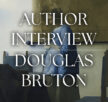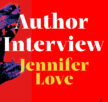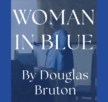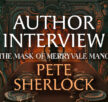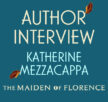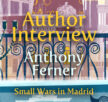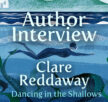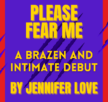Memory and Love
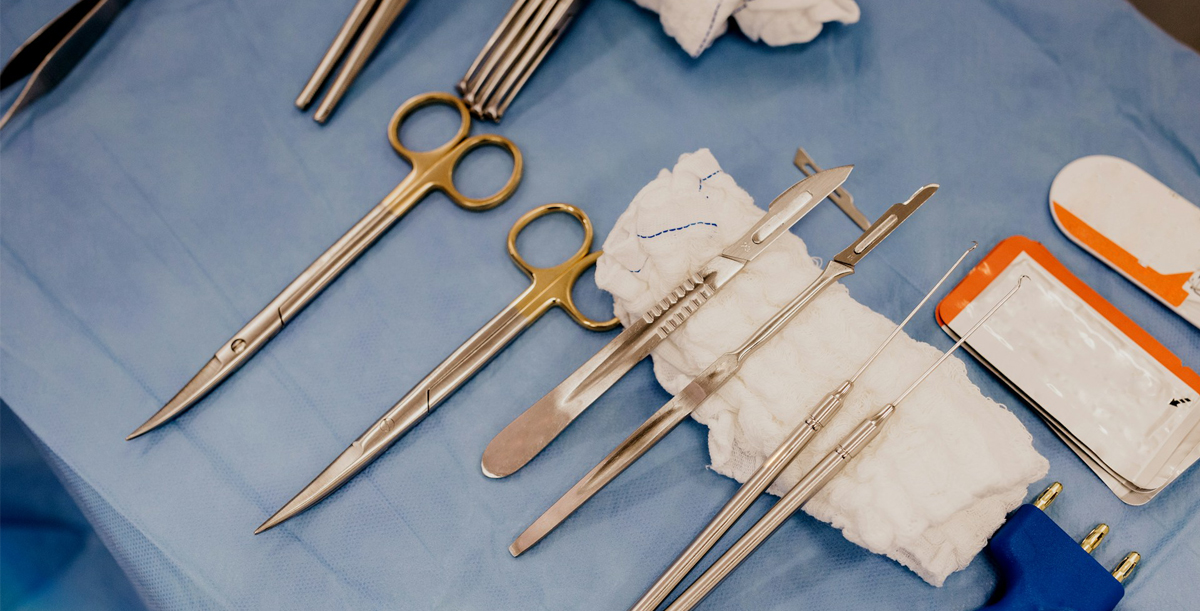
As in life, the dead also showcase their inequalities. When I say the dead, I mean the dead bodies, the cadavers. I became aware of these inequities in a strange way when I joined medical school. It was on the stone tables of the anatomy dissection hall that I first noticed these differences.
In elementary, middle and high school I don’t remember lagging in studies or sports. I was not one of the top students; you could say that with confidence. I was average, probably, or perhaps slightly above average. There were a few students who were highly talented and excelled in whatever they did – whether academics, track, games or music. Little did I know at that time that many of my other classmates would blossom and become much accomplished in their chosen fields.
By high school I had become a good parrot, remembering what my teachers taught in class and what I memorized from the textbooks. Based on much better grades in high school I was accepted to medical school. In my part of the world, you could get into schools of medicine and dentistry after completing high school. But I found the going tough and the medical school environments very challenging. It was clear to me that I was one of the dumbest students in class. And, compared to high school courses, the medical curriculum – human anatomy, physiology and biochemistry – went way over my head. It stopped me in my tracks and tried to submerge me like a mudslide burying huts at the foothills of mountains.
Every day, Monday through Friday, for three full hours in the morning we had anatomy. They were dissection sessions with some instruction interleaved which I felt to be as enjoyable as a dentist’s drilling. This was in a large hall with two dozen large stone tables which could accommodate a human dead body with all four limbs stretched out. The hall was well-ventilated with ample daylight, but there was no air-conditioning. The hall smelled of death, decay and formalin. Our class of more than two hundred was split into fourteen groups of fifteen to sixteen students. With scalpels, scissors and forceps, guided by an illustrated anatomy manual authored by Cunningham, the four students assigned to each limb would start working from the palms of hands or the soles of feet. Our goal was to learn about the muscles, bones, blood vessels, nerves and other tissues and understand the structural relationships among them. The keywords thrown at us to annotate the structural relationships – medial, lateral, superior, inferior, anterior, posterior, proximal, distal – were all too confusing, to say the least. They didn’t seem like significant terms; they felt like sharp arrows piercing my scalp in the process of finding their way into my brain. They drew blood and lots of it. They felt like brain biopsies without anesthesia.
The bodies came in different shapes and sizes, tall and short, lean and fat, like people in real life. They were all adults, and the vast majority were male and old. There were all sorts of stories swirling about them, and around them – they were former prisoners, homeless people, missing persons who ended up dead. You could find various types of scars, not just surgical; possibly from stabbings, physical fights and other types of injuries.
One cadaver particularly distinguished itself and stood out from the rest. The eight feet by four feet stone table was barely enough to accommodate his huge stretched out body. He extended to almost seven feet, had Asian facial features and appeared middle-aged with a largely muscular build. He reminded me of a Japanese sumo wrestler. Nobody knew exactly how he ended up on our dissection table. There were many tales floating around in the morbid air of our dissection hall.
One tall tale was that he was a Japanese soldier deployed in Burma during the second world war and refused to surrender, staying back in the north-eastern part of India taking up drug trafficking to make a living. When the trail became too hot, he moved south to throw off the cops. Another narrative doing the rounds was that he was a champion amateur wrestler from the north-east who later became a contract killer; that he was caught and imprisoned, and died in jail. Yet another spinner was that he was a recruit to the Indian National Army of Subhash Chandra Bose, later eking out a living from the meager pension doled out to freedom fighters by the Indian government. They were all plausible tales but there was no coherent explanation as to how he finally landed spreadeagled on our large stone table. The tales definitely added an aura and mystery to the eerie setting of the anatomy dissection hall where we were starting our medical training. He became our Gama, taking the name of the big and celebrated north Indian wrestler. Gama was the only named body in the hall and the sixteen students who dissected him became the envy of the whole batch. They were nicknamed the Gama team; unfortunately, I was not a member of that prestigious team.
The anatomy department later announced a talk on Gama with a lot of fanfare. The local press was invited. The Gama team students who dissected the head of Gama under the guidance of a newly recruited anatomy tutor had made an interesting and significant discovery. They noticed a large tumour in the pituitary gland postulating excessive secretion of the growth hormone to explain Gama’s gigantism and acromegalic facial features. With that, the stature of the Gama team went through the roof, making them instant celebrities on campus.
*
Spring was giving way to summer. Thick dark clouds were gathering over the campus as a prelude to the arrival of the monsoon with the expected summer rains and thunderstorms. The political clouds gathering over the country were starker and darker, with the ruling political party and its leaders spewing political thunder and lightning to stymie and suppress the emergent mass movements of the country. The reigning prime minster of India, Indira Gandhi, soon declared a countrywide emergency curtailing and suspending civil and democratic rights. A few of my politically inclined friends became activists and started fighting the emergency by pasting posters and scribbling slogans on the walls protesting curtailment of freedom and imposition of censorship. ‘Drown emergency in the Arabian sea; Death to emergency; Long live democracy’ became their clarion call. I was also motivated to join them; I was not doing particularly well in my coursework and was considering taking some time off from my studies anyway.
We campaigned for restoration of civil and democratic rights. We also published pamphlets and leaflets demanding withdrawal of the emergency and distributed them on the streets. We made house to house campaigns to spread the message, taking our publications with us. We recruited students from other educational institutions for the fight. Many of us were arrested, grilled for hours, and subsequently let go after a couple of days in custody. This happened a few times, but we were never incarcerated for long periods of time. Nevertheless, it was a harrowing experience for all of us. Maybe the authorities thought we were just political novices causing some nuisance and did not pose any real threat to them.
Little did we know at that time that many activists were tortured and disappeared during these dark days. The custodial deaths and disappearances came to light only after the withdrawal of emergency after over two years. There were rumours floating around earlier, but hard facts were not easy to come by. My activism continued but I also decided to resume my medical studies, setting a slower pace. Some sympathetic medical school professors who appreciated the activism facilitated my stretched-out graduation timeline. It took more than a decade to finish my training and fulfill all the graduation requirements. By that time, a large number of my classmates were already practicing as specialists in their chosen medical or surgical specialties.
I went to meet an ophthalmologist friend of mine from my medical school days. I hadn’t seen him in a while as he did his residency and fellowship training out of state. During the emergency he had shown some initial interest in activism but then quickly decided to focus on his studies. In his practice room I saw many novel gadgets and he took pains in describing the uses of some of them to me. I still remember the enthusiasm with which he showed off his binocular ophthalmoscope. While taking leave of him I noticed a sophisticated equipment with multiple tubes jutting out sitting in a corner of the room. ‘Why don’t you describe that new gizmo also,’ I said. With an incredulous look in his eyes he replied, ‘It is a Eureka vacuum cleaner, dumbo.’ I had never seen one in my life until then!
I was suddenly reminded of an IQ test I took in middle school. I don’t remember my exact score, but it was somewhere in the low nineties. Most of my classmates scored above one hundred with a few even landing in the 140s and 150s. I had felt then that unfamiliarity with some of the questions had lowered my score.
A professor of mine who had trained in the UK, his nameplate announced MBBS, MRCP, was a great clinician and a devoted teacher. His colleagues, trainees and the patients at large marvelled at his clinical acumen. I am guessing his residency training was in a high-profile research-intensive teaching hospital in London. In comparison, our institution was resource-limited but still trying its best to develop a respectable research portfolio focused on answering important clinical questions relevant to the local populace. Running his fingers through his still dense but gracefully thinning hair he would exclaim with an expression of concern, ‘Unlike old times, medicine is advancing by leaps and bounds these days, and it is the West which is driving the research caravan. If we don’t keep up, or at least stay in touch, you will be thrown by the wayside. At the minimum, we have to read the journals to keep track of what’s happening; catching up will take time. When I happen to go to international conferences, I know my role these days; I just sit back, listen, and try to learn; I don’t expect to be presenting or teaching.’
During my house surgeon training days and later on when I started my residency training in internal medicine, I had the good fortune to train under him. I still feel that working under him provided me with a solid foundation in clinical medicine. By the time I completed my residency he had retired from our institution.
Our clinical mentor carried a fine sense of humour. On occasion it would be served spicy with a streak of pun and a healthy dose of laid-back sarcasm. Glancing at one of the women in our group who seemed a little distracted and then turning his head towards all of us, he remarked to nobody in particular, ‘The carelessness of her thick-growing hair is very carefully made with sufficient attention to detail.’ I was reminded of my friend’s comment after seeing pictures of then prime minister Indira Gandhi in the newspapers: ‘You know what? See, she has dyed her hair black incorporating an elegant trail of gray in the middle like a silvery stream flowing through a dense dark forest.’ Our teacher continued, ‘You all should take note. If you devote this much care to the clinical exam of the patient, it would be a lot more fruitful and valuable.’ With an under-expressed smile, he moved on to other matters calling for his attention.
He was indeed a stickler in the methodology of clinical examination and in eliciting clinical signs. In those days, acute rheumatic fever was not uncommon in the medical wards of India. You would see adolescents, even young adults, admitted with fever accompanied by swelling, pain and redness in multiple joints. He had his trademark remark: ‘Remember folks, rheumatic fever licks the joints but bites the heart.’ And many adult patients used to be admitted with mitral and aortic valve stenoses and leaks. While examining a patient with suspected mitral stenosis, if the patient was not placed in the left lateral position, that is, turned sideways to the left while performing auscultation of the heart, he would get irritated. Another day he asked a student to examine a patient’s abdomen. The man was lying flat facing upwards with legs stretched out. When she started palpating his abdomen, our professor said curtly, ‘No, ask the patient to bend his legs and prop them up. That’ll relax the abdominal muscles.’ He could be much more stern and severe with his trainees for procedural lapses in the clinical examination of the patient.
Before joining our medical school as faculty, he had served for a few years in the army. He had not been into mountaineering or anything like that but had done some camping and backpacking at the foothills of the Himalayas. He would talk about snow boots, crampons and ice axes. We had absolutely no clue what he was talking about as we had never encountered any of them in our lives. He was also a member of the team that spent a few months in a remote station in Antarctica performing scientific experiments. He was the team medic and felt it was a lot of responsibility in such a faraway place disconnected from civilisation and access as we know it. But he recalled with enthusiasm seeing lots of penguins and walking on glaciers. When I asked if he would make another trip he said, ‘It’s tough out there; once in a lifetime is good enough.’
*
Decades went by but I always felt that this one particular professor opened my eyes to clinical medicine and taught me how to look for, discover and elicit the clinical clues, obvious and not so explicit in each and every patient. A little girl had been admitted in our ward with a history of prolonged fever. I had examined her and during rounds reported: ‘Liver enlarged, soft, tender, surface smooth with sharp edges; spleen not palpable.’ He then examined her abdomen, agreed with my liver findings but showed me how to look for a palpable spleen. When I re-examined her, I could make out a soft, mildly enlarged spleen.
He sincerely believed that medicine was a strange mixture of art and science. Though a treatment might appear magical at the time, he was always aware of the uncertainties and limits of medical care. He would tell his students, to the point of repeating himself, ‘The same medicine prescribed by two different physicians for the same medical condition would have different effects on patients.’ He was the one with a healing touch, I thought; it came from his caring nature and deep concern for his patients. Rarely, you would see his ears and the tip of his sharp nose reddening while examining demanding and fussy patients. His irritation would then be directed towards us; the response came flying towards us like darts in the form of tough questions.
Every week – I think it was on Tuesday, early afternoon – the clinical club would gather in the Department of Medicine main lecture hall. Scheduled for an hour from 1pm it would go beyond the hour on many occasions. The time overflow would happen more often when our professor brought a few interesting cases – uncommon but eye-catching physical findings, unusual presentations of very common clinical conditions, rare diseases with unique manifestations. As my memory is not very sharp these days, I can only recall a few of those cases he presented. One was an adult patient with dextrocardia, a condition in which the heart is placed on the right side of the thoracic cavity, with an additional diagnosis of cardiomyopathy; the other one which I recall clearly is an adolescent boy he brought in with a heart murmur so loud that it was audible to most people gathered in the lecture hall.
Once there was a fire in our library triggered by an electric short-circuitry. It resulted in some damage but most of the collections were saved as the fire was quickly put out. Before the full extent of the loss was known, a colleague of our professor, referring to him remarked, ‘It doesn’t matter even if the whole library burns into ashes; he can recreate all the knowledge contained in those books from memory within a short time.’
A new restaurant had opened recently near our medical school. It quickly gathered rave reviews and soon everyone started discussing the menu, the settings with its indoor and outdoor seating and its ambience. On post-admission day, after rounds, he took us to the new restaurant for a late lunch. Everyone was extremely hungry and, fortunately, the restaurant was not very crowded. Opting for outdoor seating, orders quickly poured in: medhu vada, rasa vada, idli, plain dosa, masala dosa, onion uthappam, poori masala and so on. And within minutes the dishes started arriving on our table piping hot and steaming, exhaling a multitude of aromas and flavours. With many ‘wow’s, comments started flying back and forth: ‘looks great; perfect colour and texture; what a nice flavour; feels so soft even before touching; beats even my mom’s cooking.’ It just went on and on.
And he suddenly asked, tasting a slice of medhu vada, ‘Any similarities with clinical medicine?’ We didn’t clearly understand what he was getting at, but we put up a few keywords – appearance, colour, smell, texture, edges and even taste. ‘Oh, ya,’ he exclaimed. He continued, ‘There are many commonalities between clinical medicine and culinary science, though we don’t always talk in those terms. Clinical medicine stands on four named pillars –inspection, palpation, percussion and auscultation. Investigations were later add-ons. Likewise, the chef’s art is founded on five basic principles – inspection, olfaction, palpation, audition and gustation – standing in for the sights, flavours, texture, sounds and taste. Ingredients and calories come later on.’ I was taken in by his improvisation and extrapolation.
It was obvious that he read a lot, not just medicine but other disciplines too. It seems to me he relished fiction; he was such a good storyteller. After a close election in the state of Kerala, during government formation, when legislators were defecting and crossing back and forth between the two camps or coalitions, vying for power, journalists and cartoonists were having a field day. Before starting his ward rounds, he suddenly asked us, ‘Did any of you see Yesudasan’s cartoon today? Says it all about our society and current politics.’ It likely reminded him of something significant. He pulled a chair and sat down slowly, as if contemplating the past, present or even the future. ‘Caricatures have a lot in common with stories. A writer focuses on the pertinent aspects of life while fine-tuning, illustrating, touching up and colouring them in various hues. A good cartoonist is not distorting and disfiguring but depicting the character and personality by stretching, emphasising and exaggerating, thereby creating an expressive portrait which convey individual traits and emotion.’ It was clear he was reminiscing.
It reminded me of the time when we all went to the city fair during childhood. When everyone else wanted photo portraits I became enamoured of the caricaturist nearby drawing cartoon faces. He asked me to sit down and started sketching. He turned my ears into kites, like an elephant’s. It looked so funny, and I was delighted.
Our teacher told us World War II stories. He had heard them during residency and fellowship training in Britain and later while serving in the army. The scariest were the tales of prisoners of war. When the allied POWs were released at the conclusion of the war, they were jubilant and celebrated their victory and freedom by excessively indulging in all sorts of food and drinks. Most of them had practically starved for months and years as prisoners. The sudden consumption of large quantities of food made most of them sick. Many had to be hospitalised in critical condition and a number of them died. When postmortem reports came in it was revealed that they all suffered intestinal perforation. Their gut had become paper thin due to their earlier starvation and couldn’t handle the sudden intake of copious quantities of food.
I heard this story soon after my classmate, and I had been released after being locked up for a couple of days. Indira Gandhi had come to town and our campus to lay the foundation stone for a new cancer care centre. We were arrested before her plane landed and let go only after she was in the air again. We had very little money on us when we were put away, enough for just tea and a snack. After being released we had quickly showered and headed to the nicest affordable restaurant for a sumptuous meal. We did fine because of the short incarceration.
Though I went out of the country for further studies and training, I carried the feeling that I owed all my clinical skills to my old professor. I started interdisciplinary studies, and being a slow learner, overwhelmed by the new environs, and the added challenges of living in a new land, it took many years for me to finish my graduate studies and training. Subsequently, I joined as faculty and taught in a few medical schools.
Whenever I visited my home country, I always wanted to visit my old professor. For one reason or another, or for no particular reason as often happens in our world, a meeting with my mentor never materialised. And suddenly, out of nowhere, like a slow-moving dense dark cloud, the pandemic descended on the world. Similar to a highly invasive cancer starting in one organ and quickly spreading to the whole body and ravaging it, the pandemic, starting in one country, began to slowly engulf the whole world. In medical school we were not taught a lot about pandemics; however, plague, smallpox and the influenza pandemic of 1918 did indeed find a place in our curriculum.
I became curious, confused, intrigued and perplexed reading and listening to the various reports in print and broadcast media. I also started pondering over the various articles in the medical and public health domains. Everybody had questions; friends and extended family members would call to discuss various aspects of the looming pandemic. To answer their questions, I immersed myself in reading more and more articles and publications. It started consuming most of my time. I got requests to give talks, discuss and answer questions about the pandemic over Zoom from various quarters including my hometown in India. A year into the pandemic I felt like I had accumulated enough knowledge to write a book on the most important global health scare in a century.
I made quick progress with my writing and also lined up an enthusiastic publisher. Who else to dedicate the book to, other than my old beloved medical school teacher? It took more than a year for the book to be published. By that time the pandemic had largely retreated rendering air travel safe again. On my next visit to India, I carried a few copies of the book with me.
With two of my friends who also trained under my beloved professor, I finally visited him. I was a little nervous and felt guilty for not having looked him up all these years. From a distance, he looked much thinner. It was obvious he had lost weight. His steps seemed lighter as though he was walking on a soft fluffy carpet or beach sand. With slow shuffling steps he reached the front gate and carefully unlocked it while squinting his eyes trying to make out as much detail as possible from our faces with his sharp, though aging, gaze. His hair had thinned out. I was reminded of the time when he had such dense and dark hair which always made me jealous. Even when I was a trainee under him, I had started losing my hair and now mine was almost all gone. His hair still looked fluffy, though graying had set in. Now standing at the open front gate in a white dhoti and brown shirt, he appeared to have aged gracefully, and his bright face, while marked with many wrinkles, retained the kindness and concern which were best expressed when he examined patients. Once, during my training, I had taken a few weeks off to campaign for a parliamentary candidate with left leanings. When I was back, he enquired about my political work and narrated a few stories about his interactions with various political leaders of the time. He told me that he had treated many of them over the years.
He was not particularly fond of a former chief minister who was forced to resign following withdrawal of the emergency. Lowering his voice, he let go, ‘This leader was ruthless and efficient but also quite corrupt. I’ve heard from reliable sources that he used to just give away bundles of cash to his extended family members and political cronies.’ He left it at that without elaborating further.
Another time when he came to the ward for rounds, he was flustered. Generally, he was an embodiment of calmness and serenity. When I gave him an expression of askance, he said, ‘Some days, everyone starts driving crazy. I almost got hit from behind by two speeding tailgaters.’ While engaged in a discussion of lymphoma he suddenly ran his hand along his chin and feeling the uneven stubble remarked, ‘This morning while shaving the lights went out. Does it look really funny?’ And he continued with his clinical topic.
I had never seen him in this state. He seemed to be agitated, confused and relieved at the same time. Sitting in his office and staring straight into the white blank wall in front of him he was counting fingers. Seeing me he blurted out, ‘She was late in reaching the train station and missed the train. Emma is a lucky girl, and I am a blessed Dad.’ His daughter was studying medicine in Bangalore and had reserved a ticket in the Island express which that day derailed while traversing a bridge. Most of the bogies fell into the Ashtamudi backwaters underneath, resulting in more than one hundred fatalities and hundreds of injuries.
Taking a break, he went to the post office to buy stamps and envelopes. His son was getting married in a few weeks, and he had lots of invitations to be mailed out. There was just one more person ahead of him at the post office counter when the postal clerk decided to take a lunch break. Purchasing what he needed after waiting for an hour or so he gently told the clerk, ‘There were just the two of us; you could’ve taken care of us earlier; my patients would be waiting for me.’ And the clerk’s response was that he didn’t know a doctor was waiting. Narrating the incident, he bemoaned, ‘He didn’t get it; doesn’t matter if it is a doctor, teacher, or farmer. Why make them wait unnecessarily. I didn’t want to argue with him.’
His mom used to live with him, and he was caring for her. Once he noticed that the blood pressure medication for his mom that he had just purchased and brought home was already expired. When he took it to the pharmacy to get it exchanged the next day, he was offered no apology but only a new batch of tablets. He reported that incident to us with a mix of outrage, anguish and dismay, and shrugged his shoulders.
An undertrial in a murder case was admitted in our professor’s medical unit when he complained of chest pain. There had been lots of press coverage about the gruesome killing he had allegedly committed. After completing the ward rounds, we all went to check on the prisoner. Our professor greeted him politely, elicited a short medical history and then proceeded to perform a detailed physical exam. After checking the EKG and going through other test reports he told the guards, ‘Doesn’t look like he has any heart condition; we will observe him for a couple of more days.’
After rounds sitting in the coffee house, he said to us, ‘Never ask a prisoner why he or she is doing time. As an undertrial they have the right of presumption of innocence. If they have been convicted and you come to know about their crimes, it is possible you’ll lose empathy and that would compromise your caregiving role.’ What about political prisoners, I asked him. He seemed lost in thought for a while and remarked, ‘That is a great question. But remember, your political views may not be aligned with theirs and you could end up in a long political discussion.’
He greeted us warmly at the gate. He remembered the names of my friends but not mine. I somehow felt he had a faint recollection of me. He stared at my face for a long time as if briefly lost in thought and then, recovering, he said, ‘You were into leftist causes, right?’ He beckoned us to the well-appointed front porch of his modest yet charming house and we sat chatting for some time. I gave him a copy of my book and my friends chimed in that it is dedicated to him. He put on his reading glasses, looked through the first few pages and said, ‘I’m eager to read all of it.’ Did I notice a strong sense of pride and satisfaction in his facial expression and demeanor? Maybe.
I asked him about the clinical training of medical students. He sat silent for a few minutes with his gaze turned towards the ceiling as if lost in thought. A soft veil of sadness slowly covered his face. ‘Very bright students join the medical school. It has always been like that. But we are failing them. I agree that medicine is evolving, with all the imaging modalities and new biomarkers. Lots of new material to learn. But we are losing focus on imparting and developing clinical skills among the new crop of students and trainees. That seems to be the foundation of medical science to this old doctor and teacher. My time under the sun has ended, it is about time to be with the moon and the stars.’ His gaze was now on us.
He talked reverentially about a colleague instrumental in the founding of a clinical specialty department in medical school. He continued, ‘Dr BK was a person of integrity and courage. And he was a good researcher and an excellent clinician. He also published a few books which were well received. But after retirement life has not been kind to him. He recently suffered a debilitating stroke and is bedridden, cared by a fulltime home nurse.’
I thought about our professor. He was a well-regarded clinician and teacher, admired on and off campus. He took care of patients and trained his students well. Two of his children were doctors. The who’s who of the city – political leaders, artists, writers, sports stars, other celebrities – were his patients and many became his friends over time. Life in general had been nice to him. Would he have a deep distilled message for his students, patients or society at large? Before I could ask, as if he was reading my mind, he remarked, ‘Compared to Dr BK, mine has been an ordinary and unremarkable doctor’s life. I also had my ups and downs, but I am at peace with myself.’
On my way home. the words ordinary and unremarkable reverberated inside my head. Maybe he said it out of modesty and humility; possibly, even out of conviction. My stomach suddenly knotted, and a cloud of sadness engulfed me. Many questions were swirling in my head. How does one feel having such great clinical acumen? Did he succeed in imparting even a fraction of his skills to his trainees? And what does he think about the newer trainees who adopt a more theoretical approach and perform many investigations. And taking a step back, what does it actually mean to be a great teacher? Does she try to impart what she has learned; does she open the pathways to knowledge for her students; or does she try both approaches? I found it hard to tease out one approach from the others. It wasn’t even obvious to me what approach my professor took. He seemed to be at peace with himself; he would have figured out his unique path through the maze to teach and train his students.
There is a range of symmetry and asymmetry between a teacher and her students in dimensions of knowledge, expertise, skill, recognition in society and professional prestige. Symmetry is valued in art and architecture. Symmetry is also taken as the norm and the core value of relationships. Asymmetry and inequality can also be valuable, even beautiful. Memory, recollection and recognition, like love, affection and care, are most beautiful when they’re mutual and traverse two-way streets. All along I had expected him to remember my name and recognise me at first sight. I had somehow come to believe I was one of his pet students and took immense satisfaction from that feeling. Maybe most of his students and trainees felt likewise. That is, I thought, what probably makes a great teacher.
I suddenly remembered his observations: When money is gone, I take it easy; when health is lost, I care, that is the primary reason I became a doctor; when love is lost, a lot is lost, that is why we become distraught; when memory is lost everything will be lost; always remember, medicine is based on love and memory. Memory and love do provide enormous solace to the person who remembers and loves.
For more short stories, subscribe to our weekly newsletter.
